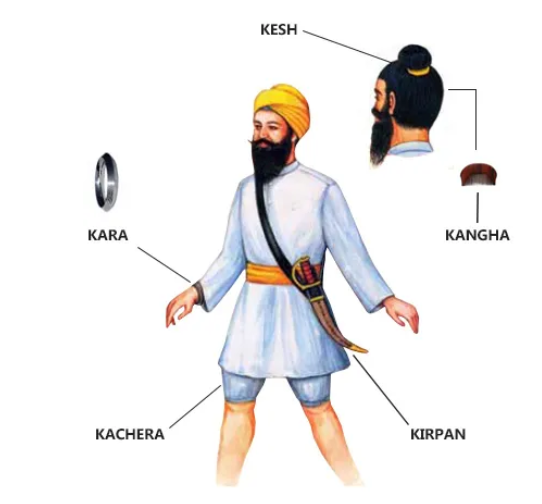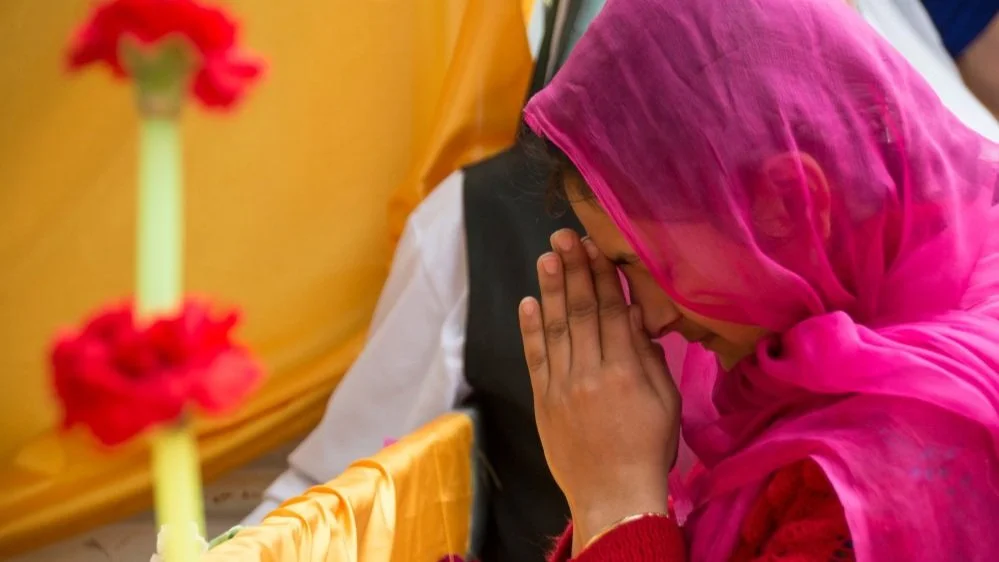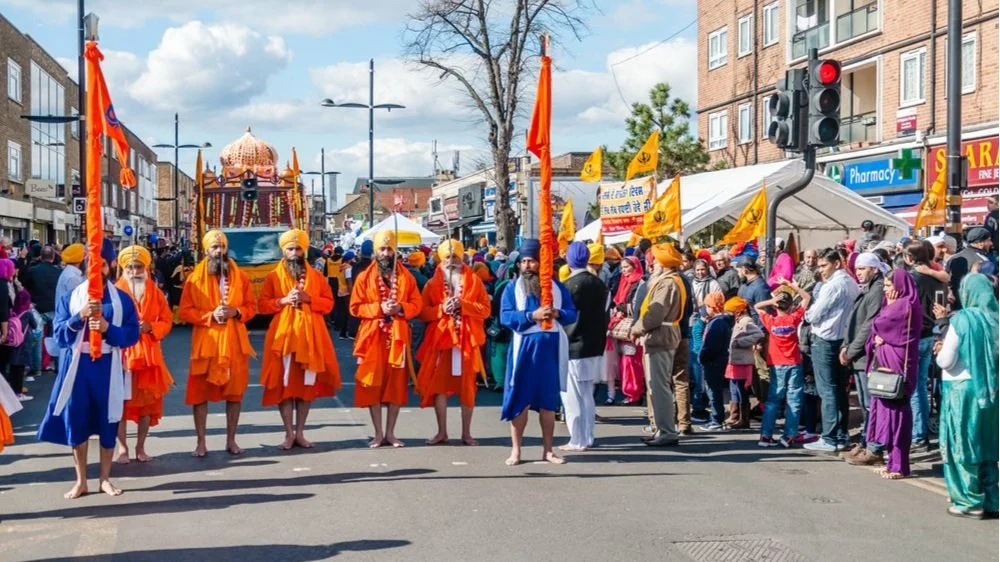Vaisakhi: The Birth of the Khalsa and the Spirit of Sikh Identity
Every April, millions of Sikhs around the world come together to celebrate Vaisakhi, a vibrant festival filled with joy, reflection, and deep spiritual meaning. But beyond the colourful processions and communal gatherings lies a powerful story that changed the course of Sikh history forever.
Vaisakhi marks the birth of the Khalsa, a moment in 1699 when courage, equality, and faith were brought to life by Guru Gobind Singh Ji. It’s a story of transformation — when ordinary individuals stood up to become protectors of justice and freedom.
In this article, we’ll explore why Vaisakhi is so much more than just a cultural celebration. It’s a reminder of timeless values, a call to live with compassion and integrity, and an enduring symbol of Sikh identity. Join us as we journey through the origins, traditions, and modern-day meaning of Vaisakhi.
Vaisakhi is an important event in the Sikh calendar and is celebrated by Sikhs all around the world. It remembers the founding of the Khalsa Panth by the 10th Guru, Guru Gobind Singh Ji in the city of Anandpur Sahib “City of Bliss”. This historical religious event also coincides with the beginning of the harvest season primarily in the Punjab region of North India.
Beginning of the Khalsa Panth (Community of Initiated Sikhs)
To give a broader perspective on why Vaisakhi is celebrated, lets delve into historical events so that we understand the relevance this has on today’s Sikhs.
In 1699, in the city of Anandpur Sahib at the Keshghar Fort (now known as Keshghar Sahib), Guru Gobind Singh Ji baptised 5 volunteers from the congregation who became known as the Panj Pyare (the five beloved ones) and started a community of the Khalsa ‘the Pure’ which grew into the thousands within days. Guru Gobind Singh Ji gifted the Khalsa a unique identity which consisted of five emblems that are to be always worn by baptised Sikhs, and for his Sikhs to always display a true character of righteousness and uphold freedom from oppression. Thus, the Khalsa Panth were born. The Khalsa was so unique as it allowed all to join regardless of caste or creed. From 1699 the Khalsa became a free army for the people and is true to this day.
Today Anandpur Sahib holds one of the five thrones of Sikh authority.
Identity and Routine of a Sikh
Today you can still identify baptised Sikhs by the five embloms (5x K’s) they were given when initiated into the Khalsa which are still the same to this very day. An identity to stand out from the crowd.
Kara (iron bangle worn on the right hand) symbolising the unity with God and the circular nature of God’s existence, emphasising eternity and the connectedness of Sikhs
Kangha (wooden comb worn in their hair) used to maintain hair, and represents cleanliness and discipline, reminding Sikhs to keep their lives tidy and organised
Kirpan (Ceremonial Dagger/Sword) to remind Sikhs of their duty to protect the weak and uphold justice, and is a symbol of courage and religious freedom
Kesh/Keskhi (hair / Turban) Sikhs believe that hair is a gift from God and should be kept intact, symbolising acceptance of God’s will and a rejection of pride in one’s appearance
Kachera (Undergarment) symbolising modesty
Spiritual Identity
With the 5x Ks set as the externally warrior identity of a Sikh, there is also the inner spiritual part of a Sikh which must also be maintained. This is done with a daily routine of meditation and prayers from the Guru Granth Sahib (Sikh scriptures authored by the Guru’s as the divine word of God).
Amrit Vela (the ambrosial hour) is a sacred period of the day for all Sikhs to wake up and bathe, followed by meditation on the divine name Waheguru (Gods name). Amrit Vela it typically around the hours of 3am
Morning Prayers typically recited around 6am and consist of five times separate prayers. These prayers are called Japji Sahib, Jaap Sahib, Tav Prasad Svaiye, Chaupai Sahib and Anand Sahib.
Evening Prayer is Rehras sahib and it normal recited around 6pm
Before Bed Prayer is Kirtan Sohila
Vaisakhi Today
Vaisakhi is celebrated by Sikhs on the 13th or 14th April, and with there now an estimated 24million Sikhs across the world, Gurdwara’s (Sikh’s place of worship) are firmly established across all continents and will hold special services to remember the birth of the Khalsa Panth, to remind us of the sacrifices made, and values a Sikh’s should live up to. Sikhs will also take part in communal meals and attend street processions lead by Gurdwara leaders (Nagar Kirtan). Gatherings and community events also take place that welcome participants from all faiths and backgrounds.
Vaisakhi is a time for reflection on the Sikh values and beliefs which are enshrined in the holy scriptures of the Guru Granth Sahib, Sikh scriptures authored by the Guru’s as the divine word of God.
Below I have listed some of the values and beliefs which are deeply rooted from the month of Vaisakhi in 1699.
To remember and meditate on One God
Equality amongst all
Social justice
Service to humanity
Tolerance for other religions
Vaisakhi reminds Sikhs of the importance of living a life of honesty, compassion, humility and sharing your time and wealth for charity or a worthy cause
Around this historical event many Sikhs around the world would be preparing to take Amrit (baptism) to join the Khalsa upholding the Sikh code of conduct. The essential message that Vaisakhi sends to Sikhs is that they should always have spiritual devotion and reverence of God. And that Sikhs should be proud of their origins and remember the sacrifices Sikhs have made throughout history.
We live in challenging times today, and as a baptised Sikh I get questioned a lot from my own family and others about my faith. I welcome the opportunity to enlighten others, to build tolerance and acceptance, so that humanity can live together in harmony.
I would like to complete this article with the words of Guru Gobind Ji after he created the Khalsa.
“Khalsa mero roop hai khaas, Khalseh meh hau karau nivaas”
Khalsa is my form, In Khalsa I live
“Khalsa mero mukh hai angaa, Khaalse ke haun sad sad sangaa”
Khalsa is my body, With Khalsa I am ever ever present





